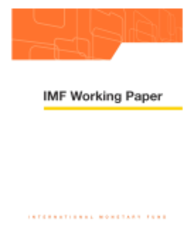
Debt Accumulation in the CIS-7 Countries : Bad Luck, Bad Policies, or Bad Advice?
Following the breakup of the Soviet Union in 1992, several low-income countries in the Commonwealth of Independent States (CIS) accumulated substantial external debt in a short time span, about half of which is owed to multilateral financial institutions. Three factors contributed to the current debt burden. First, the initial years of transition brought large systemic economic disruptions, loss of transfers from the center and collapse of trade relations among Council for Mutual Economic Assistance (CMEA) countries, and negative terms of trade shocks. Second, fiscal and other reforms, and consequently, growth revival, took longer than expected. Third, overoptimism by multilaterals contributed to the high debt levels. If external financial assistance, which was needed because of high social costs of the transition, had come in the form of grants in the first two or three years of the transition, the debt burden would have been lower and sustainable.
Publication date: May 2004
ISBN: 9781451851687
$15.00
Add to Cart by clicking price of the language and format you'd like to purchase
Available Languages and Formats
| English |
Prices in red indicate formats that are not yet available but are forthcoming.
Topics covered in this book
This title contains information about the following subjects.
Click on a subject if you would like to see other titles with the same subjects.
International - Economics , International - Economics , growth , structural reforms , external debt , current account , deficits , debt burden , International Lending and Debt Problems , Economic Growth of Open Economies , Kyrgyzstan , Moldova , Republic of
Also of interest
Summary
Copyright © 2010 - 2025
Powered by:
AIDC



